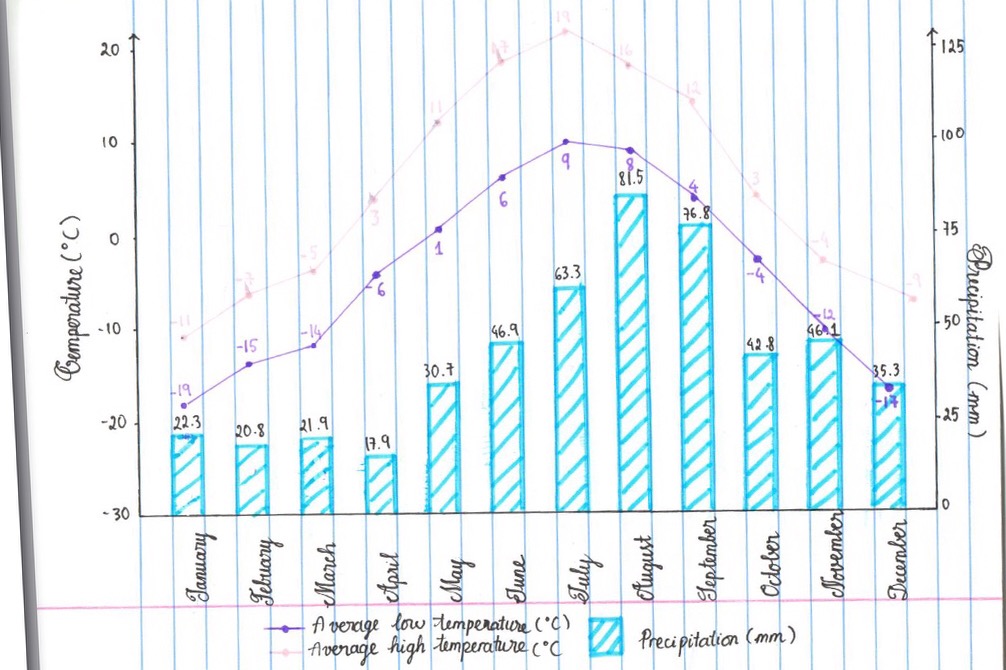
Tundra on emaze
Article Vocabulary For most of the year, the tundra biome is a cold, frozen landscape. This biome has a short growing season, followed by harsh conditions that the plants and animals in the region need special adaptations to survive. Tundra form in two distinct cold and dry regions.
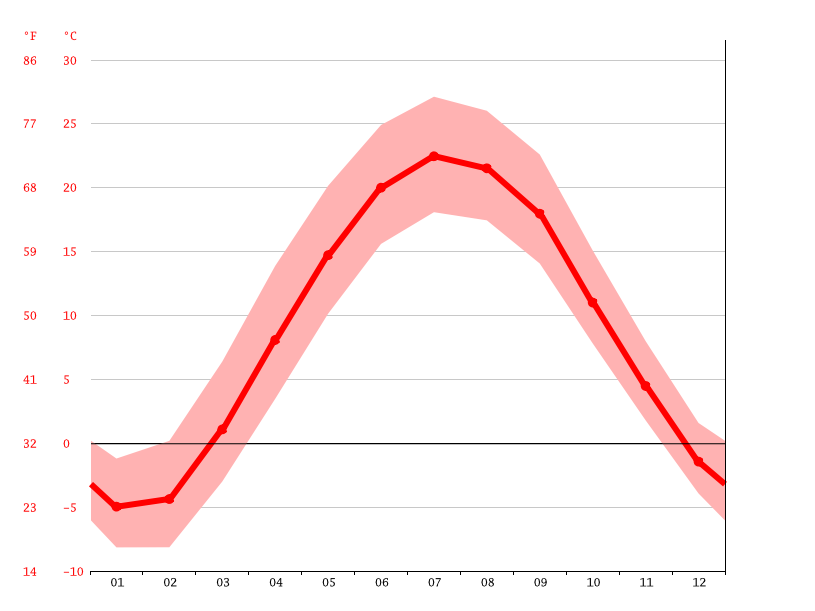
Arctic Tundra Climate Graph Depp My Fav
Polar climates like the tundra are characterized by very cold temperatures and generally dry conditions. Temperatures never rise above 10 o C (50 o F) during the summer. The tundra located near the Arctic and Antarctic Circle, experiences times when the Sun never rises above the horizon. Figure 9.6.2.1 9.6.2. 1: Ice mounds in the Alaskan tundra.
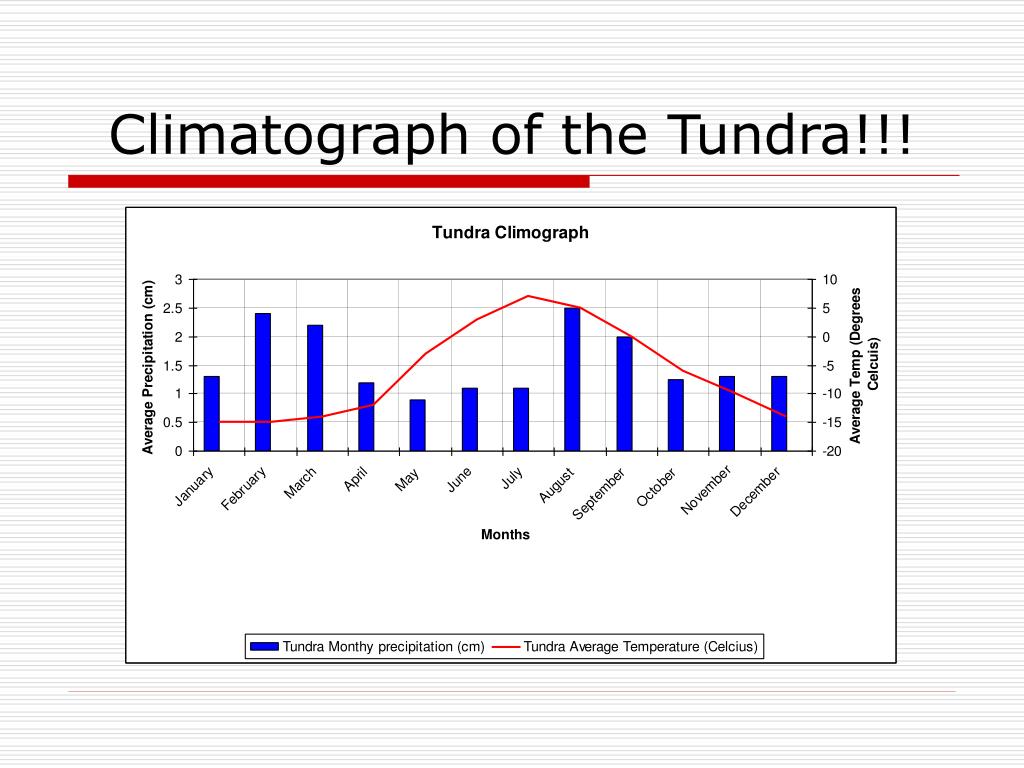
PPT The Tundra Biome! PowerPoint Presentation, free download ID1428086
Temperature and Precipitation Graphs The Great Graph Match Coniferous Forest | Temperate Deciduous Forest | Desert | Grassland | Rainforest | Shrubland | Tundra Coniferous Forest Temperate Deciduous Forest Desert Grassland Rainforest Shrubland Tundra
.png)
Temperature in Arctic Circle Facts & Information Poseidon Expeditions
Climograph Location Map Description The tundra is the coldest of the biomes. It also receives low amounts of precipitation, making the tundra similar to a desert. Tundra is found in the regions just below the ice caps of the Arctic, extending across North America, to Europe, and Siberia in Asia.

Kalaallit Nunaat High Arctic Tundra
The tundra climate is characterized by general absence of insolation and sunlight and very low temperature throughout the year. The average annual temperature is -12°C. Winters are long, bitterly cold and very severe while summers are very short but cool. The warmest month of the year records average temperature between 0°C and 10°C.
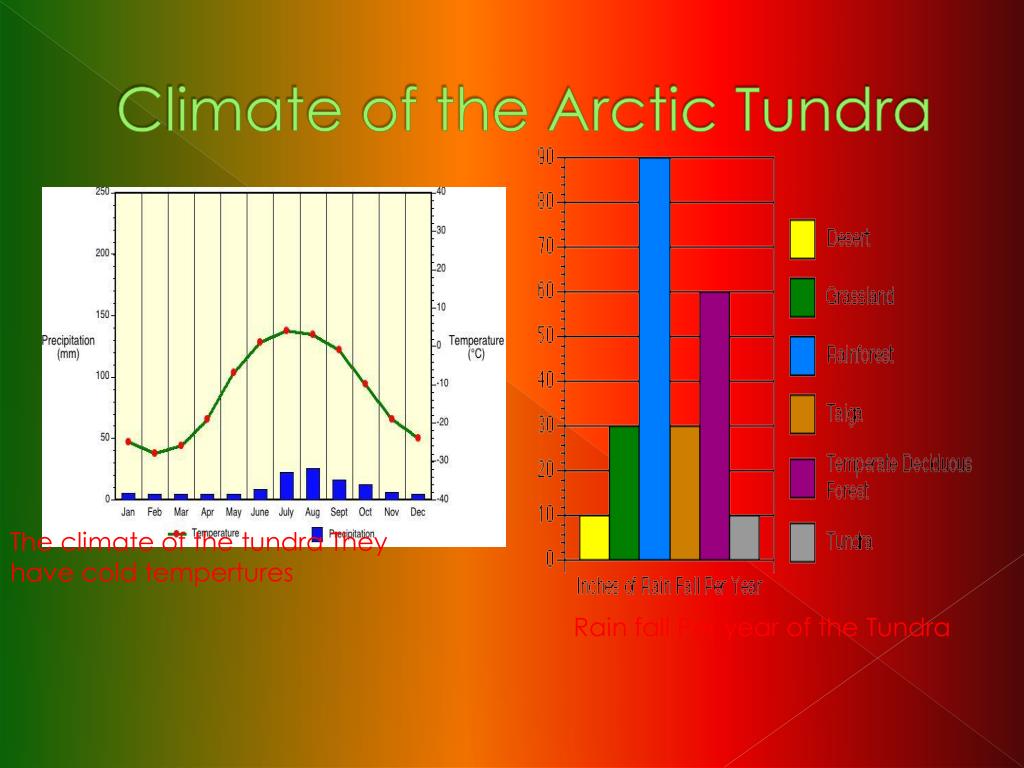
PPT The Arctic Tundra PowerPoint Presentation, free download ID1892893
The average yearly precipitation ranges from 6 to 10 inches. Precipitation falls as snow in the winter months, and in summer it exists as either rain or fog. The permafrost and bogs store water in the tundra. Tundra Climate Regions Tundra climates can be found mostly in the northern hemisphere at high latitudes.

Global change ecologist leads NASA satellite study of rapid greening across Arctic tundra
Directions. Review the biomes. Now examine the set of temperature and precipitation graphs given below for each city. Be careful reading the scales on the graphs. Using the pull-down menus, select the correct biome whose characteristics would match the data represented in the graphs. Check to see if you are correct by clicking on the "check 'em.

tundra climate graph Flickr Photo Sharing!
The tundra is the coldest of all the biomes with an annual average temperature of less than 5°C and precipitation (mostly in the form of snow) less than 100 mm per year. The weather conditions in the tundra are so harsh that only a handful of plants and animals can survive there.
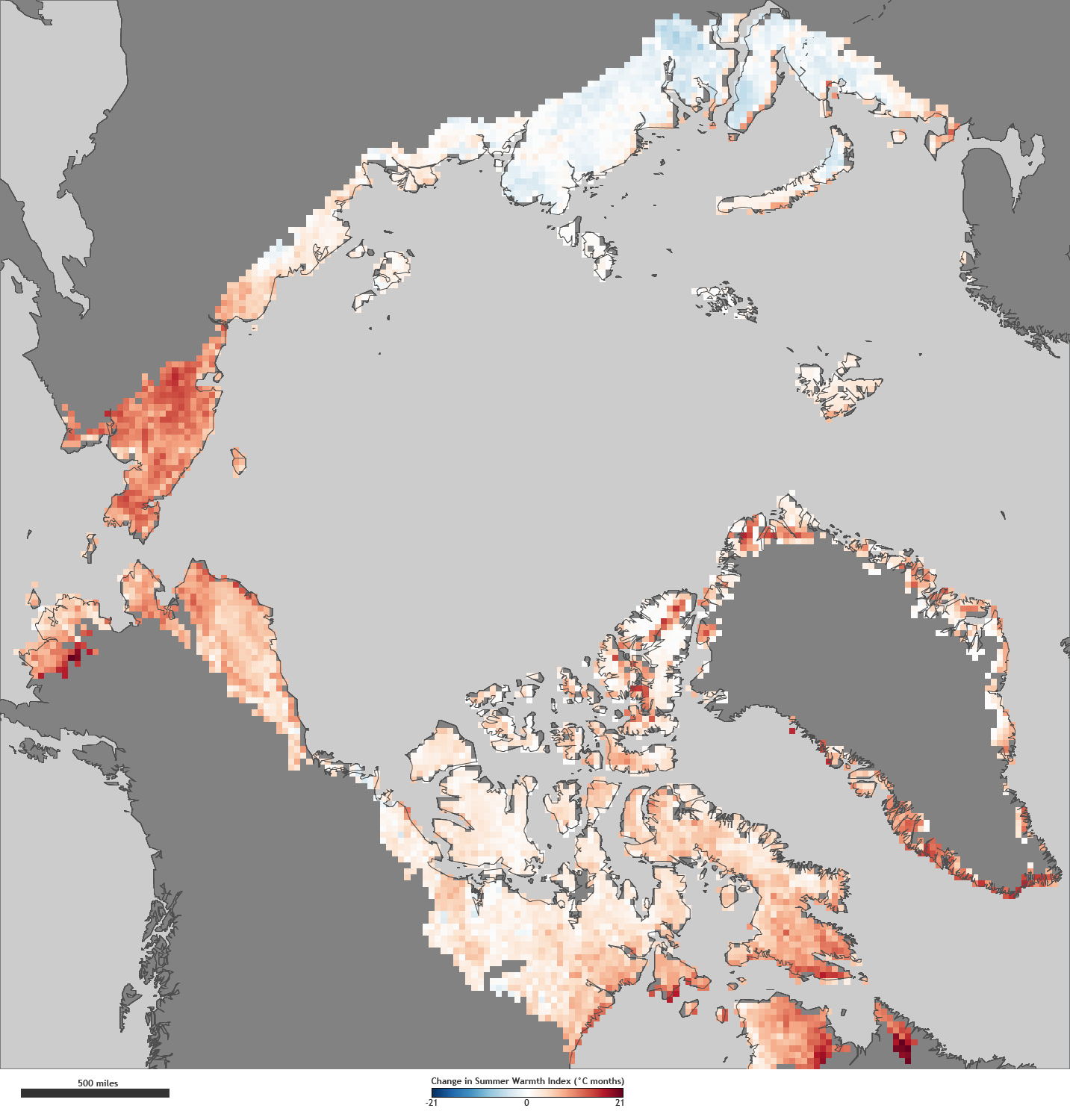
Arctic Tundra Growing "Greener" From Warmer Summers NOAA Climate.gov
Tundra Climate (E) The tundra is a bleak and treeless place. It is cold through all months of the year Summer is a brief period of milder climates when the sun shines almost 24 hours a day. It has been called "the land of the midnight sun". But even the sun can't warm the tundra much. The short summer lasts only 6 to 10 weeks.
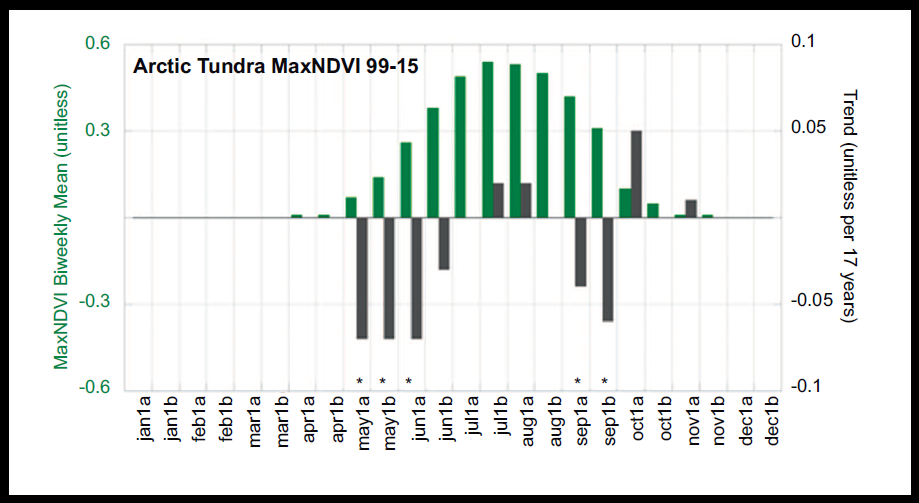
Arctic Tundra Climate Graph Depp My Fav
The tundra climate is a transitional climate between the Subarctic and Ice cap climates. It is a region of rolling to nearly level terrain almost entirely devoid of trees. Polar climates like the tundra are characterized by very cold temperatures and generally dry conditions.. (Click graph to enlarge) Controlling Factors. The tundra climate.
Arctic Tundra Climate Graph Depp My Fav
Tundra climate - Natural regions - National 5 Geography Revision - BBC Bitesize Natural regions Tundra climate As global population grows it puts pressure on the environment leading to water.
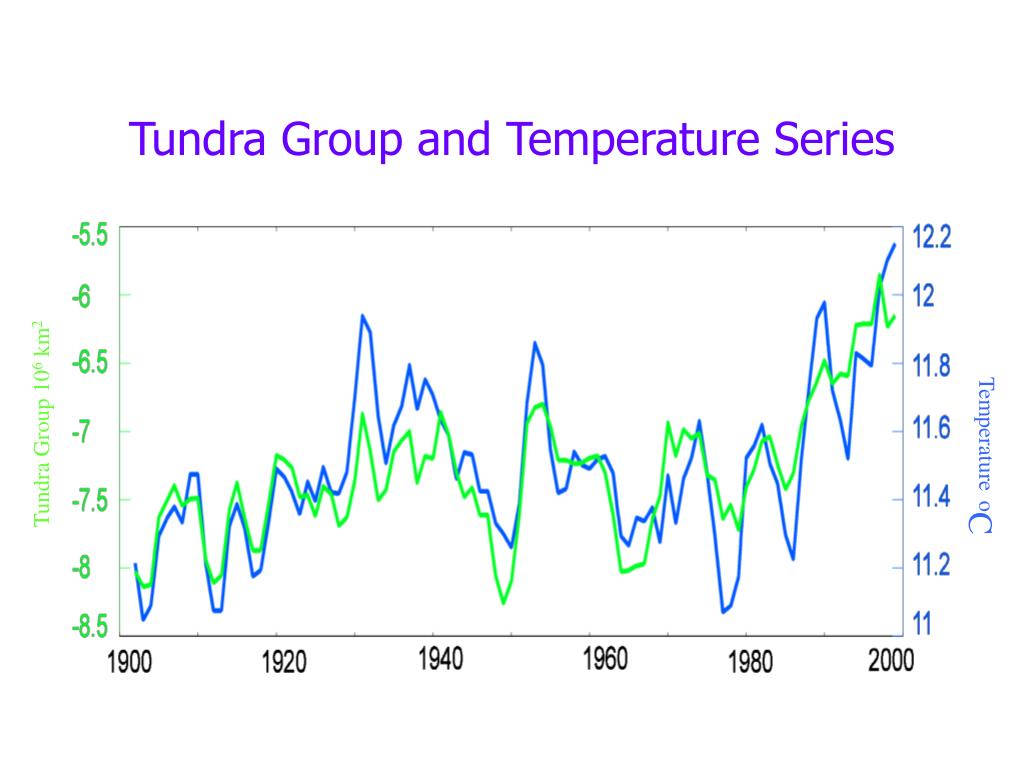
PPT Detecting Arctic Change Using the Koppen Climate Classification PowerPoint Presentation
Tundra climate Ubication of tundra climate in the world The tundra climate is a polar climate sub-type located in high latitudes and high mountains. It is classified as ET according to Köppen climate classification.
.png)
Temperature in Arctic Circle Facts & Information Poseidon Expeditions
tundra, a major zone of treeless level or rolling ground found in cold regions, mostly north of the Arctic Circle ( Arctic tundra) or above the timberline on high mountains ( alpine tundra). Tundra is known for large stretches of bare ground and rock and for patchy mantles of low vegetation such as mosses, lichens, herbs, and small shrubs.

Tundra
The tundra climate region occurs between 60° and 75° of latitude, mostly along the Arctic coast of North America and Eurasia and on the coastal margins of Greenland. It is abbreviated ET in the Köppen-Geiger-Pohl system. Köppen climate classification map

Mayo, YT Weather and Climate Blog An Interpretation of Paleo and Future Climatology of Mayo Village
G8 Geography - Constructing a Climate Graph EQUATORIAL TUNDRA . Temperature Precipitation mms JA S O tx1D 14 14 Temperature Precipitation 249 mms F 231 M 262 A 28 221 27 170 28 155 28 150 28 125 28 120 29 136 29 170 28 210 On the outline provided: Plot the two climate graphs using the data in these tables

Arctic Tundra Climate Graph Depp My Fav
The Tundra biome is the coldest climate biome on earth with an yearly average temperature less than 10 to 20 degrees Fahrenheit and precipitation (mostly in the form of snow) less than 100 millimetres per year. The tundra has short summers lasting from May to July when temperatures only rise to about 50 degrees Fahrenheit.